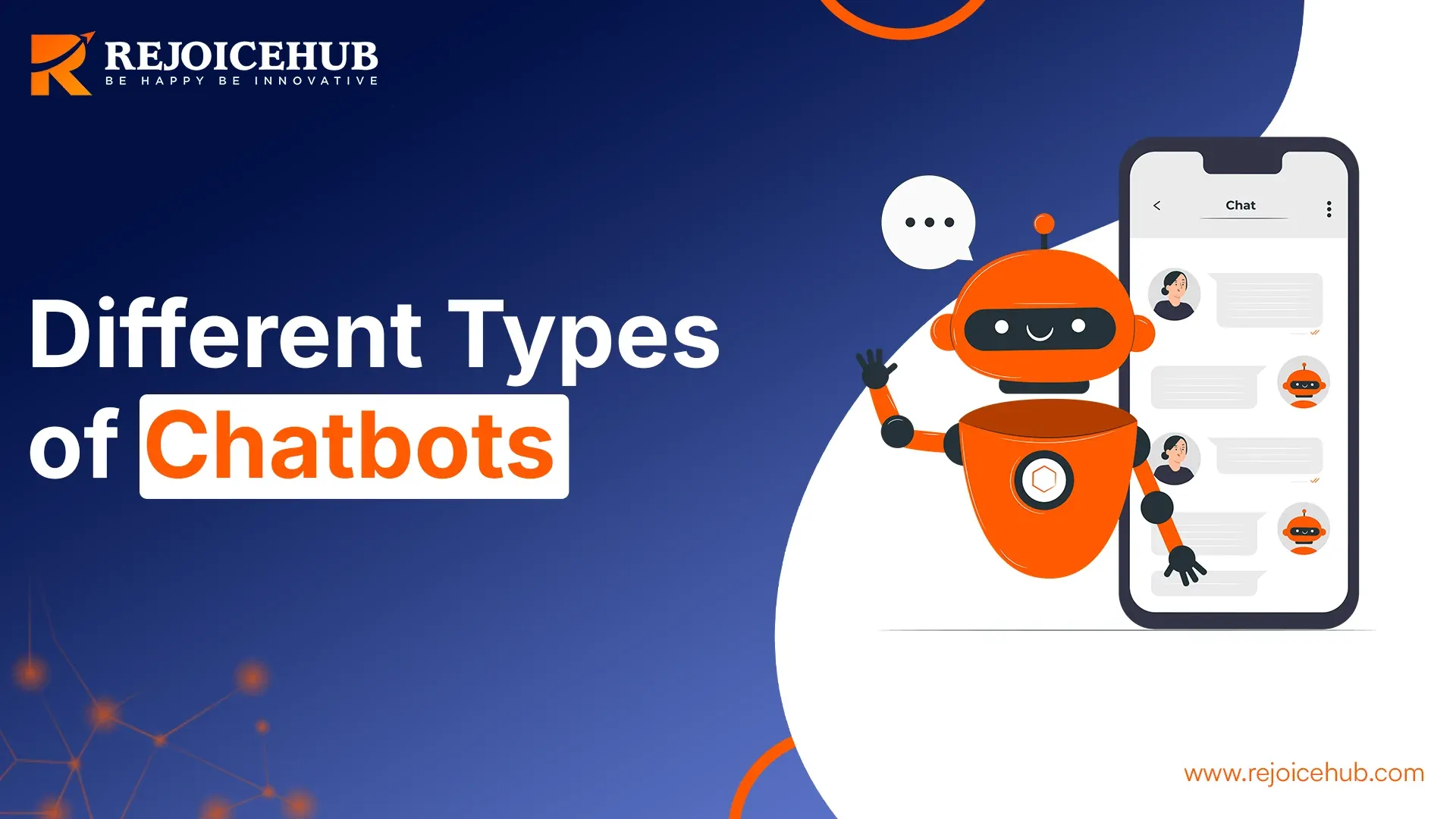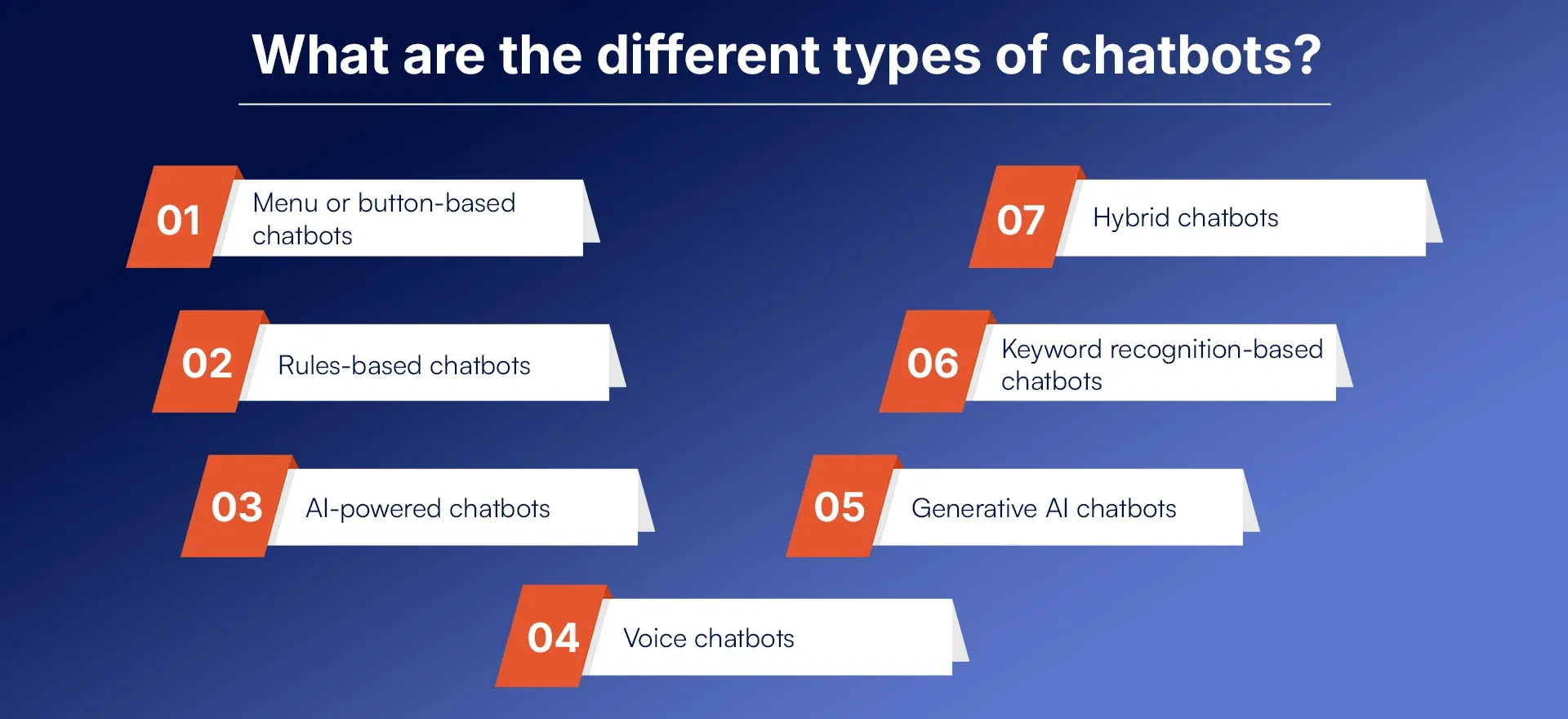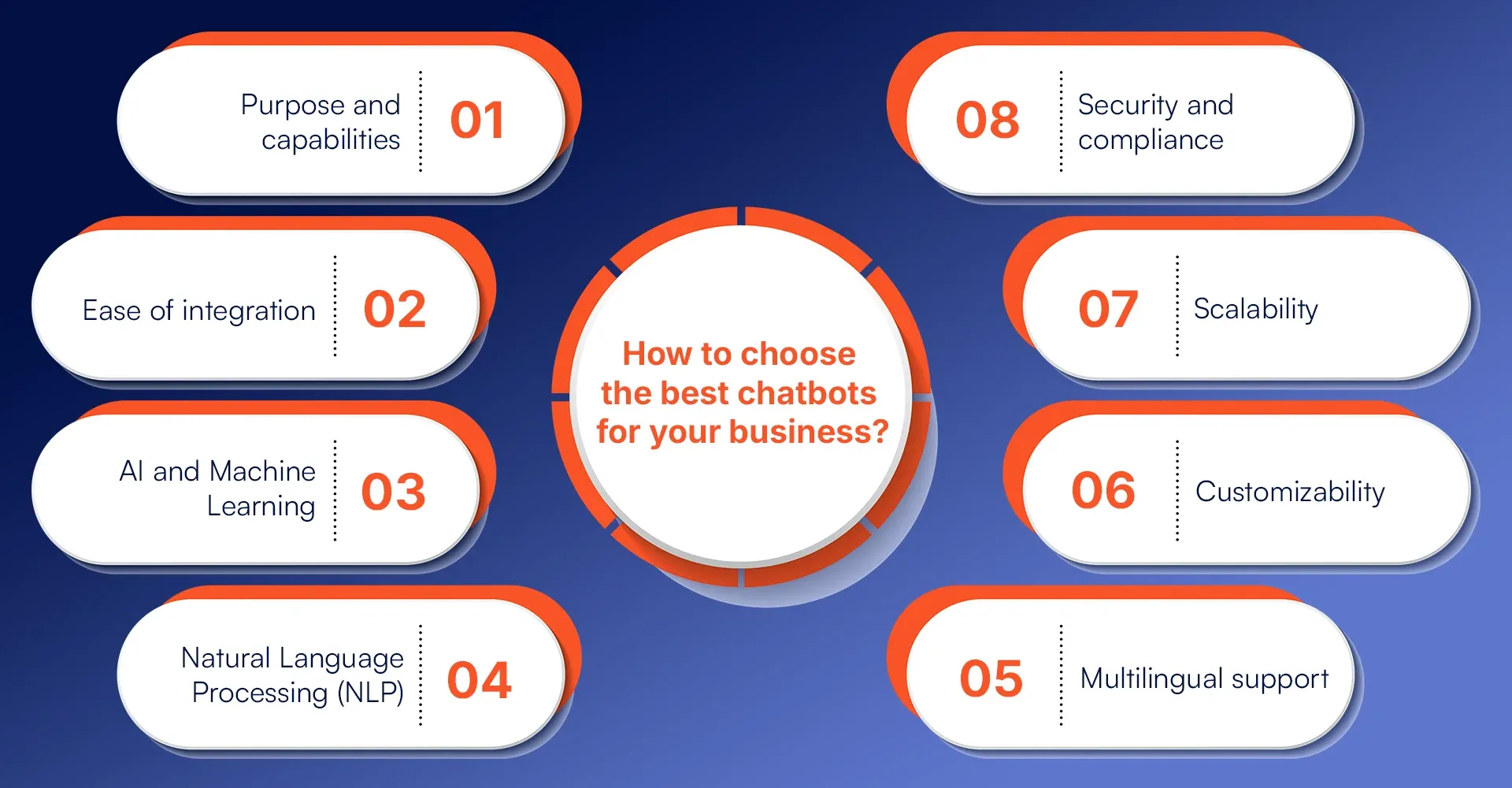
Oops, it’s been more than a day since your due delivery for your wife’s anniversary gift. You think of calling Amazon customer support, in the hopes that they do something about it.But you don’t need to do that. Simply click a couple of buttons and chat with the chatbot! The chatbot in a matter of seconds tells you that your package is delayed in warehouse due to bad weather. You have a gasp of relief and then you continue your day. Sounds simple and easy, right? That’s just one of the chatbots out there. Other than that, there are many forms of chatbots that help us in everyday life. They help us perform a variety of tasks without much human intervention, only AI and ML at their best! Read on to know about the various types of chatbot and their uses.
Quick Summary
In this blog, we’ll be learning about how chatbots are used in everyday life. We’ll go through the different types of chatbots that are commonly used, and their use cases as well.
What is an AI Chatbot?
An AI chatbot is a type of automated software that uses artificial intelligence (AI) technologies to interact with users in real-time, providing answers and performing tasks. This leads to realistic answers instead of already scripted ones.
What are the different types of Chatbots?
Chatbots are AI-powered virtual assistants designed to automate conversations and enhance user interactions. They can be categorized based on their functionality, technology, and purpose. Chatbot types come in different shapes and sizes, each designed to meet specific needs and provide varying levels of interaction.

1. Menu or button-based chatbots
Menu-based chatbots are one of the simplest types of chatbots. They guide users through predefined options that are presented as buttons and menus. As a user, you simply have to select a button and the chatbot responds. This is effective for businesses that require straightforward interactions.
2. Rules-based chatbots
These types of chatbots come with pre-programming. They are built with rules that determine how to respond. They follow a stricter set of instructions. For example, if the user asks about store hours – the bot will provide the store hours. They don’t learn from any form of interactions.
3. AI-powered chatbots
AI-powered chatbots are where things begin to get interesting. They use AI and ML algorithms and help in engaging in more personalized and sophisticated conversations. It’s all about the analysis and understanding of user input.
The models will then improve their response based on user interaction.
4. Voice chatbots
Voice chatbots are designed to communicate using spoken language. Imagine a person talking to you and resolving your queries. Think of it as if you’re talking to a salesperson. Voice chatbots have become popular. They come in the form of assistants like Amazon’s Alexa and Apple’s Siri.
5. Generative AI chatbots
These are very advanced forms of chatbots. They use super-advanced machine learning models (GPTs) and generate responses from scratch. They’re developed in a way that helps them mimic human conversation – providing dynamic and context-aware replies.
6. Keyword recognition-based chatbots
Keyword recognition-based chatbots work by detecting specific keywords. They do so by analyzing user input and triggering responses that are based on those keywords. This works best in contexts where users have to use a specific language or terminology.
7. Hybrid chatbots
Hybrid chatbots combine elements from different types of chatbots.
For example, a hybrid chatbot might use both rule-based logic and AI capabilities. They will do so to provide more accurate responses.
Also Read: AI Agent vs AI Chatbot - What is the Main Difference
How to choose the best chatbots for your business?
There are many benefits to using chatbots. Whether you’re doing it for your business or simply using them personally, there are some points to keep in mind. The bot that you choose affects your effectiveness and performance by loads – making it key that the bot that you pick satisfies your needs and requirements.

1. Purpose and capabilities
A chatbot’s primary purpose defines it capabilities. A chatbot that’s designed for customer service has different features than one that’s built for lead generation. It becomes important to understand the purpose of the chatbot first. Do that before you move forward with a specific chatbot.
2. Ease of integration
For a chatbot to be effective, ensure that it integrates with existing platforms. Be it a website or an app – the chatbot must easily sync with current systems to avoid any form of disruptions.
3. AI and Machine Learning
AI-powered chatbots improve over time by learning from interactions. Machine learning allows the chatbot to adapt to new scenarios and optimize its performance, which makes it more valuable over time.
4. Natural Language Processing (NLP)
NLP kind of humanizes a chatbot. It helps it develop a communication language that feels very natural. This feature is critical for AI-powered chatbots that require handling open-ended conversations. As in the conversations, the context of each interaction must be understood.
5. Multilingual support
A multilingual chatbot in a globalized world is a must. So, one with these capabilities can help serve users that come from different linguistic backgrounds. This works best for companies that have a rather global presence, such as a giant like Amazon.
6. Customizability
All businesses have unique needs. If a chatbot is customizable, a business can tailor the responses of a chatbot and its behaviour to align with the brand. This makes the chatbot a personalized tool, giving the brand a catered experience and providing the same to the consumer as well.
7. Scalability
As your business grows, so will the volume of interactions your chatbot must handle. Scalable chatbots handle increasing user interactions without compromising performance. This means that your chatbot continues to serve effectively no matter how vast your business is expanding.
8. Security and compliance
Security becomes key when it comes to handling user data. Chatbots must comply with regulations like GDPR, ensuring that sensitive user information is protected at all times. This is a pre-requisite for businesses that always look towards meeting industry compliance standards.
Conclusion
Chatbots represent an integral part of the AI-led era. It’s crucial to understand what they are, as they help businesses grow and expand. We went through the various types of chatbots in this blog. We also understood what their responsibilities are.
If you’re looking to build a functional, efficient chatbot for your business – then Rejoicehub LLP has the finest solutions that are built just for you. Get chatbots that help you grow your business with us!
Frequently Asked Questions
What are chatbots used for?
Chatbots automate customer service, provide quick answers, assist in transactions, and enhance user engagement.
Can chatbots replace human customer support?
Chatbots complement human support but don't replace it entirely, especially for complex or emotional queries.
How do AI chatbots learn?
AI chatbots learn through machine learning by analyzing interactions and improving responses over time.
